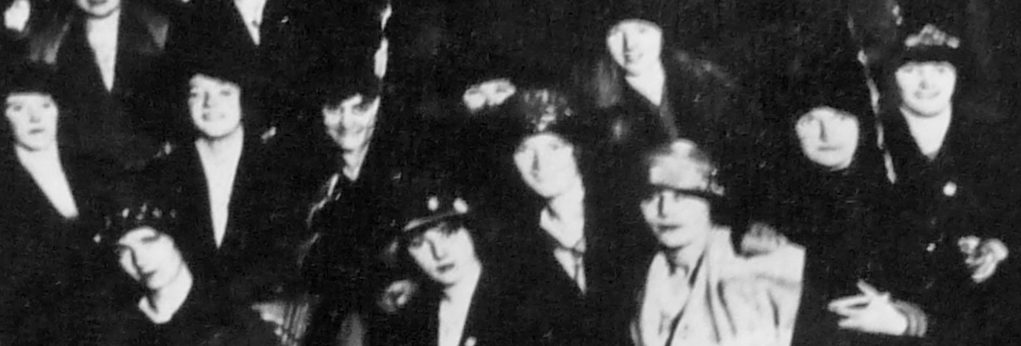Guide to Radcliffe on Trent Women

Nurses striking at Notts. County Asylum, Saxondale, 1922, over proposals to reduce their pay and increase their hours
Radcliffe on Trent women and their service in WW1
Biographies of Radcliffe women
Radcliffe on Trent WWI Women’s Roles
Notts 94 Voluntary Aid Detachment, Radcliffe branch of the British Red Cross
The story of Claire Birkin, commandant Notts 94 VAD and of Lamcote Auxiliary Hospital for Officers.
The story of Ellen Leaver, matron at Notts County Asylum and Notts County War Hospital
The story of Kate Barnard member of the Women’s Army Auxiliary Corps
The story of Ethel Rosetta Smith, member of the women’s forage corps
Memoirs of WW1 in Malta by Radcliffe on Trent nurse Grace Durant
The Radcliffe on Trent WWI project team is busy researching how local women’s lives changed during the war. We have discovered Radcliffe women who took up new occupations such as nursing and factory work and others already in employment who found their jobs changing with wartime circumstances. We are also looking more generally at the impact of war on women’s daily lives.
Servicemen’s lives are well documented. We have looked at hundreds of records for Radcliffe men showing their military status, when and where they fought, how they were killed or wounded and the medals they were awarded. Women’s lives are much harder to trace without such detailed documentation. However since the Red Cross began making Voluntary Aid Detachment records publicly available in the spring of 2015, we have made some progress.
The link above takes you to names and then biographies of women we have researched. The list includes women working for the Red Cross, its most prominent member being Claire Birkin who was ran the 94th Voluntary Aid Detachment in Radcliffe on Trent throughout the war and turned her home, Lamcote House, into an auxiliary hospital for officers in 1918. Grace Durant, a member of the 94th V.A.D. has an exceptional story. She became a nurse who served in Malta then continued her nursing career up to and including the second world war. Olive Elnor, Daisy Newbury and Marie Holmes are among several other local women who served with the Red Cross. Another woman working in healthcare was Ellen Leaver, matron at Notts County Asylum before the war. She maintained her senior role, worked alongside army medical officers in 1918 when the asylum was converted to Nottingham War Hospital and then continued as matron when the hospital reverted to an asylum after the war. Mary Ward, mother of Grace Durant, continued working as a district nurse during the war. Agnes Pike, Helen Packwood and Mary Scrimshaw are among several female teachers on our list who were employed at the village school before the war and carried on teaching during the war years. Mary Brice, a widow, exemplifies female shopkeepers working on the home front; all her sons enlisted and two were to die of illness after the Armistice. Harriett Pike is among those doing unpaid domestic duties whose lives changed in war time; she had to move to the south of England with her children when her husband was posted there as an air mechanic. Cissie Wesson represents women employed to do office work at the new military war hospitals. Lily Chadwick is one of the few women we have identified working in a munitions factory in Nottingham. Gladys Breedon also took on what was considered ‘men’s work’ by working as a railway porter. Finally, the Radcliffe on Trent biographies include two women serving in the forces. Kate Barnard served in the Queen Mary’s Army Auxiliary Corps and Ethel Rosetta Smith in the Women’s Forage Corps.
The list of Radcliffe on Trent women being researched is work in progress. Names in blue take you to completed biographies. New information and photos about these women continues to emerge and is added to their biographies as it becomes available. All updates are noted on the Updates page in the Updates section of the website menu. Research is currently being carried out on more Radcliffe on Trent women; their names and biographies are added to the list when completed.
